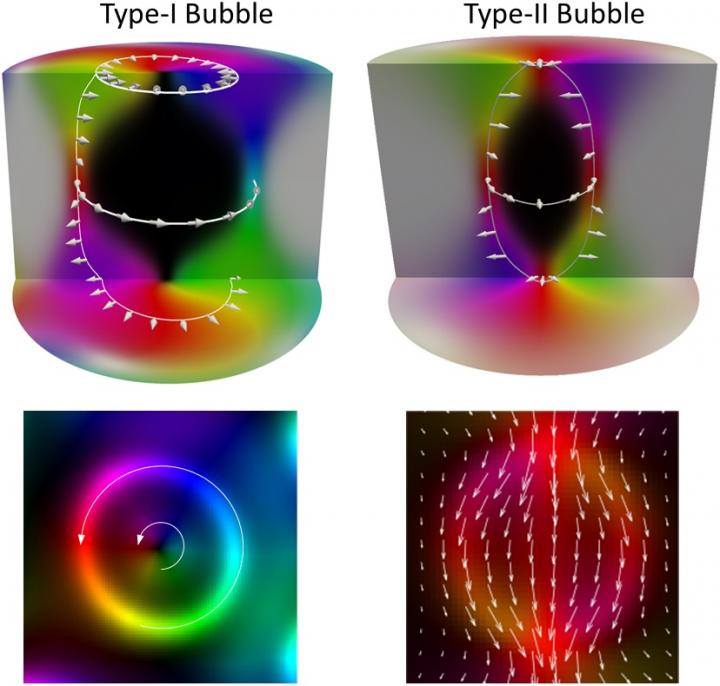
Credit: ©Science China Press
Recently, observation of new topological magnetic structures represented by skyrmions is expected to provide new paths in constructing spintronic devices. In magnetic bubbles, although these are “ancient” cylinder domains, the type-I bubbles (renamed as skyrmion bubbles with the same topology as skyrmions) have remotivated general scientific interests. On using Lorentz transmission electron microscopy (Lorentz-TEM) to recognize magnetic bubbles in magnetic nanostructures, scientists observed some complex vortex-like magnetic structures beyond the traditional magnetic bubbles (Figure 1a), which could be used as information carriers in emerging spintronic devices. Physical understanding of them, however, remains unclear. Recently, Tang et al. from High Magnetic Field Laboratory of Chinese Academy of Sciences clarified these complex vortex-like structures as depth-modulated three-dimensional (3D) magnetic bubbles in a Kagome crystal Fe3Sn2.
As retrieved from the traditional TIE analysis technique, the magnetic configurations may deviate significantly from real magnetic structures. Because of the direct detection of the local magnetic field of the differential phase contrast (DPC) technique, DPC makes it a more advanced technique in determining real magnetic configurations accurately. Using the DPC technique, first, authors obtained the real features of these complex magnetic configurations (Figure 1b). Then, by combining with 3D numerical simulated types-I and II magnetic bubbles, authors further demonstrated that the integral in-plane magnetization mappings of two types of magnetic bubbles are in high consistency with the experiments (Figure 2) and are responsible for the complex vortex-like magnetic structures.
As obtained from the TEM technique, the magnetic configurations are more readily considered as two-dimensional magnetic domains. This study suggests that 3D magnetic structures play an important role in understanding complex magnetic configurations. Recently, 3D magnetic structures have attracted much attention; however, direct observation of 3D magnetic structures remains a challenging task. This study provides an important experimental proof of the existence of 3D magnetic structures.
###
See the article:
Jin Tang, Yaodong Wu, Lingyao Kong, Weiwei Wang, Yutao Chen, Yihao Wang, Y Soh, Yimin Xiong, Mingliang Tian, and Haifeng Du
Two-dimensional characterization of three-dimensional nanostructures of magnetic bubbles in Fe3Sn2
Natl Sci Rev, 2020, doi: 10.1093/nsr/nwaa200
https:/
Media Contact
Haifeng Du
[email protected]
Related Journal Article
http://dx.




